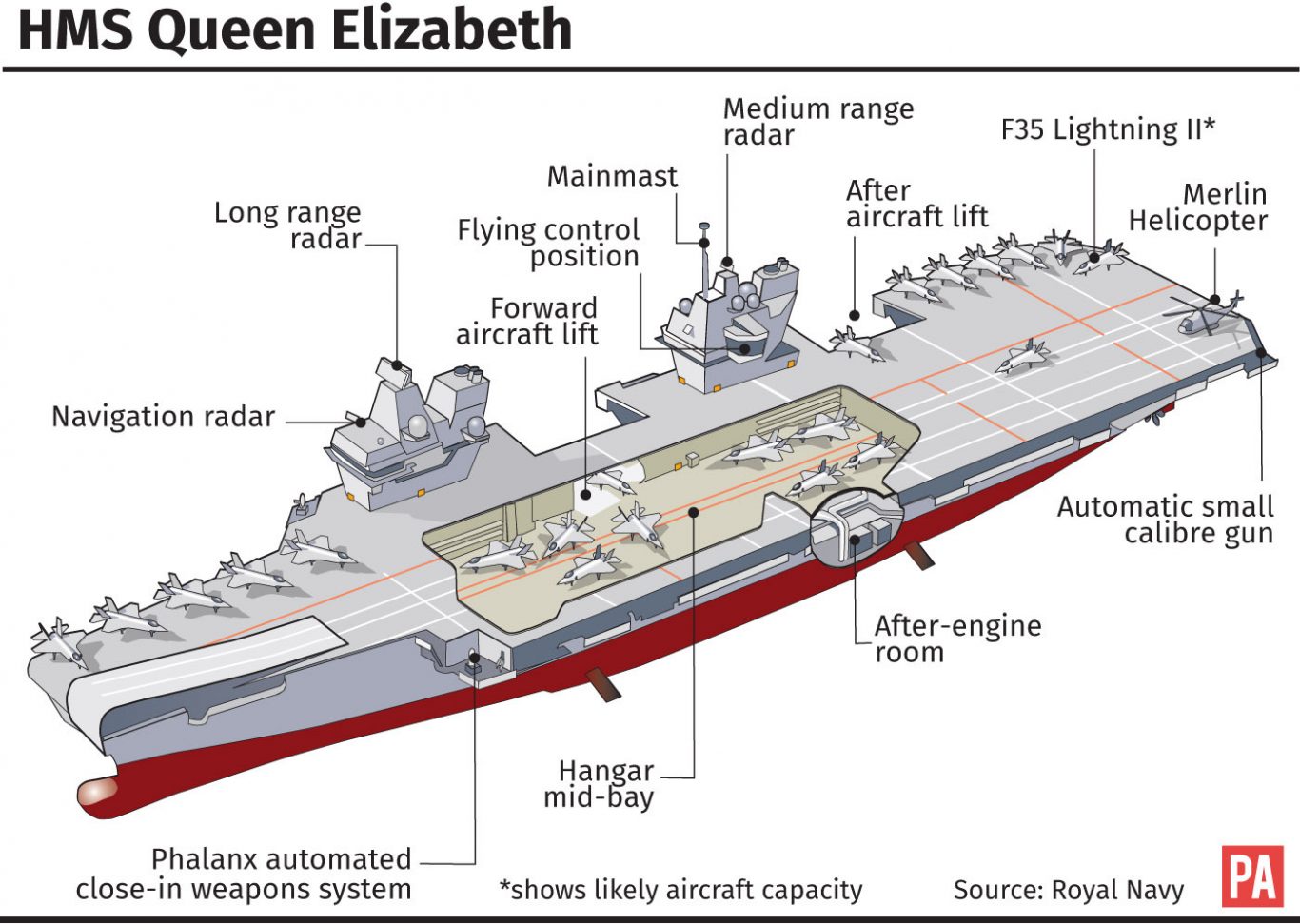
Repairs to a leaking HMS Queen Elizabeth, the UK’s new £3.1 billion aircraft carrier, will not cost the British taxpayer a penny, the Defence Secretary has insisted.
The warship, the biggest and most powerful ever built by the UK, was only accepted into the Royal Navy fleet by the Queen earlier this month.
Pressed on suggestions that repairs could cost millions, Gavin Williamson told the Press Association the money would come “from the contractors who built her”.
“This isn’t going to cost the British taxpayer a penny,” he said.

The vessel, 919ft (280m) long and with an estimated working life of half a century, is understood to have been leaking for some time.
Mr Williamson went on: “This is the reason why we have the sea trials, to make sure that everything is working absolutely perfectly.
“This is something that work is currently ongoing to deal with and HMS Queen Elizabeth will be going out early on in the new year to continue her sea trials and making sure she is fully operable in terms of helicopters and the F-35 being able to fly off her deck.
A huge thank you to all of you who supported the ship's company and contractors of HMS Queen Elizabeth today. Welcome home, @HMSQnlz. pic.twitter.com/juW64KfKsq
— Royal Navy (@RoyalNavy) August 16, 2017
“HMS Queen Elizabeth is the most magnificent aircraft carrier in the world and, when she is fully operational and she is being deployed right around the world, she is going to make a significant difference as to what we can actually achieve and what we are able to do as a global power.”
A Royal Navy spokesman said: “An issue with a shaft seal has been identified during HMS Queen Elizabeth’s sea trials; this is scheduled for repair while she is alongside at Portsmouth.
“It does not prevent her from sailing again and her sea trials programme will not be affected.”
The aircraft carrier weighs 65,000 tonnes and has a top speed in excess of 25 knots.
A number of shipbuilding yards around the country were involved in the vessel’s construction, including Govan and Scotstoun in Glasgow, Appledore in Devon, Cammell Laird in Liverpool, and A&P on the Tyne in Newcastle and Portsmouth.
Around 10,000 people worked on the ship, which was built in sections at yards around the UK and transported to Rosyth, Fife, where it was assembled.
BAE systems, which played a key role in the construction, said it could be taken to sea with the current issue.
This is why we have sea trials for prototype ships. https://t.co/D5XsxpdwSU
— Tobias Ellwood (@Tobias_Ellwood) December 19, 2017
It said the problem would be rectified in the new year, a process expected to take a few days.
The company said: “It is normal practice for a volume of work and defect resolution to continue following vessel acceptance.
“This will be completed prior to the nation’s flagship re-commencing her programme at sea in 2018.”
Responding to the news, Defence Minister Tobias Ellwood tweeted: “This is why we have sea trials for prototype ships.”


Comments: Our rules
We want our comments to be a lively and valuable part of our community - a place where readers can debate and engage with the most important local issues. The ability to comment on our stories is a privilege, not a right, however, and that privilege may be withdrawn if it is abused or misused.
Please report any comments that break our rules.
Read the rules hereLast Updated:
Report this comment Cancel